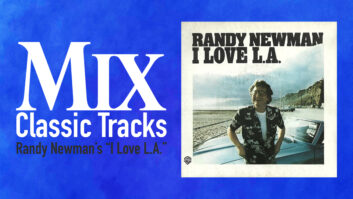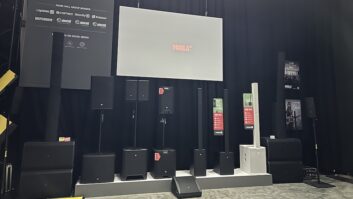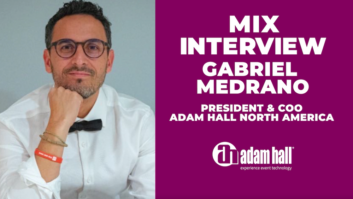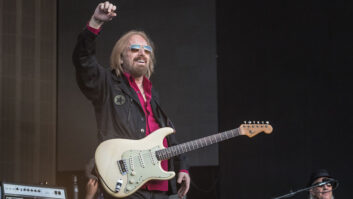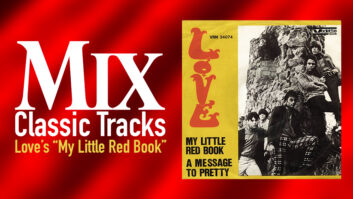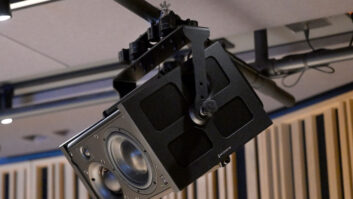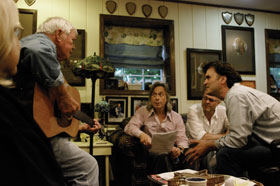
From left: Tom T. Hall, Jim Lauderdale, Eric Brace and Peter Cooper
Country Music Hall of Famer Tom T. Hall was pleasantly surprised when singer and songwriter (and former Mix Nashville editor) Peter Cooper said that he and Eric Brace wanted to produce a remake of Hall’s 1974 album, Songs of Fox Hollow. It had been unlikely enough when Hall wrote and recorded a hit children’s album at the height of his career success, “And I’d never even heard of someone redoing a whole album,” Hall says. “But of course, I said, ‘Yes.’”
The original album had been inspired by Hall’s interaction with two young nephews who spent a summer on his farm, Fox Hollow. Hall wrote about what he saw through the eyes of those boys, and the album—with charming and poignant songs like “I Love” and “I Care”—became a hit with “children of all ages.” Thirty-seven years later, Cooper—who says Hall is part of his “Mount Rushmore of songwriter influences”—was about to become a dad when he hit on the idea of visiting Fox Hollow (where Hall and his wife, Dixie, also operate a studio) and re-recording this music for the next generation.

Jim Lauderdale
“When I found out I was going to have a kid, I started thinking about what would be the first song I wanted to play for him,” Cooper says. “Other people think about painting the nursery or installing a car seat; I was thinking that I wanted ‘I Love’ by Tom T. Hall to be the first song he ever heard.”
Cooper and Brace asked some musical friends to perform the songs. “It’s one thing to ask Buddy Miller if he wants to be part of a tribute album, but it’s a much easier sell to say, ‘Hey, do you want to hang out with Tom T. at his house and sing his songs to him?’ No one said no.”
The producers’ picks included Patty Griffin, who sings “I Love”; Miller and guitar legend Duane Eddy doing “Sneaky Snake”; Jim Lauderdale on “I Like to Feel Pretty Inside”; and more. Singers took turns fronting a stellar band: pedal steel player Lloyd Green, keyboardist Jen Gunderman, stand-up bass player Mike Bub and drummer Mark Horn. Cooper says that the arrangements remained largely true to the originals, but what would have been string-section parts in ’74 are realized with Green’s pedal steel.
The Halls’ studio is in a converted dog kennel; several years ago, Dixie Hall gave up breeding basset hounds and the space was turned into a control room and series of booths, which they now use to record numerous bluegrass artists. Their house engineer is strings session player Troy Engle, who helped tracking engineer Richard McLaurin set up for the sessions.

“At the time of those sessions, we had a Mackie digital 8-bus console and we were tracking to an Alesis HD24 hard-disk recorder,” Engle says. “I was on hand to help because Richard had never recorded there before. I think he used all of the mic pre’s that were on hand: a dbx 576, several 386s—the 2-channel versions—and an older Peavey, a VMP2.”
“I started to bring stuff out there, and then I thought better of it,” McLaurin says. “I brought my Coles mic, and that may have been the only thing. So we started poking around at their studio, and it was like, ‘Oh my gosh, an RCA 44, let’s use that!’ But I wouldn’t say that any of the gear we used was the key. When you’ve got Patty Griffin and Buddy Miller and people like that, anything you put in front of them is going to sound beautiful.”
During a couple of overdub days, when McLaurin had another commitment, Alex McCollough—a mastering engineer at Yes Master (and the mastering engineer on this project)—filled in to record Jim Lauderdale’s vocals and Duane Eddy’s guitar. “We put Duane in one of the larger booths in front of the control room,” McCollough says. “He brought in his Gretsch and his Musicman amp and asked for a large-diaphragm condenser mic; I used the Neumann mic that Richard had already set up, into the Peavey mic pre. He started playing, and all I can say is, it sounded like Duane Eddy!”
Adam Bednarik mixed the completed tracks on the vintage API at House of David Studios. His approach of using minimal compression and focusing on an open, natural sound brought out the best in these lovely, affectionate recordings. “I ran the stereo mix through a pair of 1176s and into two Neve line amps,” Bednarik says. “It gave the mixes an added depth. I also ran the steel and Duane Eddy’s guitar through some UA tube compressors, but that was more for sonic character. The main thing was to keep that open sound and wrap the mixes around the vocals.”
“These songs are geared to kids, but they have some hard truths in them,” Cooper reflects. “In ‘Everybody Loves to Hear a Bird Sing,’ the song I got to do, the song goes, ‘Right now you’re young and you’re not very tall, and you’re really very busy and you’re really very small. Some day when you’re older and things go wrong, you’re gonna need a pretty bird song.’ Things aren’t always going to be wonderful, but you might want to hear a bird sing on a bad day.”
Interview With Tom T. Hall
How did Peter and Eric present this project to you? Did you know the producers beforehand?
Peter’s an old friend and one of my favorite writers. I studied American literature and some journalism, and I was disappointed [in music journalism] when I got to Nashville. People were well-intentioned, but they couldn’t write about country music in those days. But of late, Peter showed up in Nashville and we became good pals. Of course, he’s a picker and a singer and a songwriter, too.
And he started visiting Miss Dixie, as we affectionately call her—visiting us here on our farm—and one day, he said, “I want to re-record the Songs of Fox Hollow album. I’d never heard of anybody recording an album that was recorded, I guess, 37 years ago. It put me in mind of the Wyatt Earp Gunfight at the OK Corral: It lasted two-and-a-half minutes, but they’ve made 37 major movies out of it! I said, “This is a first; I don’t think anybody’s ever redone an entire album.” But of course we said yes, they could do it in the studio we have out here.
My understanding is that you record mostly bluegrass music in your studio.
We’re retired, and we’re patrons of bluegrass and acoustic music. We don’t have any drums or amps; we’re not wired for loud music, but we help out. We have a studio and we don’t charge these young kids that come along or anything; it’s giving back to the music.
What was your impression of the musicians who played on the Fox Hollow remake?
I was so tremendously impressed with them because none of them had a posse or an agent or an attitude or an ego. They just sleep on one another’s couches and get up every morning and play music all day and all night, and that’s all they care anything about. They didn’t have any costumes. No makeup people.
The other thing that impressed me was, not one of them asked me what I thought of anything; they just played the song and ignored what I had done with it and just went for the song. Of course, Peter was very careful to pick people who had some affection for my music. He wanted to make sure they appreciated what I’d done with my life.
They were all a little bit into Tom T. Hall and knew what I’ve done, and some of them had been singing some of my songs on the road. Patti Griffin was doing a song on the road called “I Flew Over Our House Last Night.” And, of course, Buddy Miller’s famous for doing “[That’s] How I Got to Memphis” and sort of made it a standard.
They were all here for three days, and they all came out for the whole three days and watched each other work. They didn’t just come in one at a time. They came in like a whole tour group, and we had food and drinks and coffee and lemonade and ice tea and stuff like that. They just started picking and singing these songs, and I was fascinated by them all because of who they were and the attitude they didn’t have.
I befriended some of them who I didn’t know well. I got to know Jim Lauderdale. When he gets out in public, he gets a little hyper and I do, too, and I said, “We’re the only two guys in the room who can thread a sewing machine while it’s still running, you know?” I love being around him because he’s such an enthusiastic, positive, multitalented person. He can do almost any kind of music.
Interview With Tom T. Hall (Continued)
And he’s made some great bluegrass albums.
He recorded with Ralph Stanley of all people!
Tell me about how and where you made the original Fox Hollow album.
Well, we can start at the beginning if you have time. I had two little nephews who lived in Monaco, south of France. My wife is English and she came here when she grew up, but her sister married a chef and they moved to Monaco. We went there to visit them and they had two little boys—five and six years old—and they would come and visit us one summer. I was helping them unpack when they got here, and they had this comic book. It was called Étranger Solitaire. I don’t know much French, but I said, “That’s got to be the Lone Ranger.” And they kept staring at me. They must have thought, well, we’re in America. This is where the Lone Ranger lives, and this guy’s a cowboy so he probably knows the Lone Ranger and he might show up any minute. I was trying to figure out what was going through their heads.
I have 60 acres here and we walked around the farm, and this sounds like a cliché, I know, but I began to see the world as they were seeing it. We live in a place called Fox Hollow, and one day, they said, “Uncle Tom, what’s a fox?”
I said, “Hmmm, that’s a good question.” I said, “I haven’t seen him in a while myself, but he’s a very mysterious fellow because he doesn’t like to hang around people much.” I’m a morning person, so I was getting up in the morning before it gets daylight, when I’ve got a couple of hours to write and drink coffee, and so without even thinking about it or having a plan or anything, I was writing down all these things these kids were being fascinated by. We met Sneaky Snake down by the lake, and we had some chickens on the farm and we had a little one-legged chicken, and I wrote that into a song. So without any plan I was just writing these things down in the morning, and by the time they went home, I had all these songs I’d sort of hummed through and written down.
So I asked my producer, Jerry Kennedy at Mercury Records, “What do you think of a kiddie album?” And he laughed. He probably thought I was kidding because that’s not the kind of music I was famous for. Most of my songs at the time were about digging graves and getting out of jail and drinking beer and chasing women and fast horses. But I had a band and I had a studio on my farm, and so one day I told the band, “Before we leave town, let’s set up in the studio and put down a few of these kiddie songs to see what they sound like with music.” I wasn’t up to nothin’; I just wanted to see what they sounded like.
And then I got a phone call from Jerry Kennedy. He said, “What are you up to, T?” And I said, “Well, I’m out here at the barn and the band’s getting ready to leave town, so I’m putting down a couple of these kiddie songs just to see what they sound like.”
He said, “Oh, hell, bring ‘em on down here and we’ll do an album.” So I said, “Are you sure?” He said, “Bring ‘em down and we’ll cut ‘em. He hadn’t even heard the songs. The rest is little-known history, but history nonetheless. And we had three hit songs out of it:“Sneaky Snake” and “I Care” and “I Love.” We just sold a ton of those things.
And here’s something else we didn’t expect: Hundreds of kindergarten teachers got a hold of this album, and I don’t know how they all came up with the same idea, but I’ve got probably 200 art projects of “I Love.” One of the students would paint a little baby duck and then another…let’s see [sings] I love little baby ducks… and one would do an old truck, and one would do a little train on a track, and one would do rain—all the things that are in the song, and they would staple them all together, and the kindergarten teacher would write me a note. So it was just a wonderful experience.
Did you ever play these songs live for kids?
I never did any kiddie shows. They’re very difficult to entertain. I like to be around them. I’m afraid to talk down to them, though. I have a couple of dogs, and I change my voice when I talk to the dogs; I talk to my dogs the way some to children. But I talk to children the way some people talk to their dogs. I get a lot of respect from them, you know?
From kids or from dogs?
[Laughs] Anyway, I had done this kind of thing before when I’d made a bluegrass album. I asked Jerry Kennedy, “Do you think they’re going to play this album because it’s bluegrass? He said,”Yeah, they’ll play it.” I said, “What are we going to tell them?” He said, “We’re not going to tell them anything. We’re just going to put it out and say it’s a Tom T. Hall album.” And sure enough, we had a hit out of the bluegrass album, and then when we did the kiddie album, I said, “What are we going to tell people about this album?” He said, “We’re not going to tell them anything. We’re just going to put it out and the single’s going to be ‘Sneaky Snake.’”
So back in those days they had CB radios, and these truck drivers would talk to one another, and there must have been 200 or 300 truck drivers on the road with the CB handle “Sneaky Snake.” So it was just kind of a phenomenon. Jerry Kennedy used to tell me, “You know what frightened me about your career, Tom T? Every time we make a record, we have to launch a whole new career.” I kept reinventing my whole thing. But it was fun doing concerts, though, because we’d do a little bluegrass, we’d do a drinking song and a getting-out-of-jail song and a digging-a-grave song and do some kiddie songs; it was fun working on the road with all that choice of material. The last record never sounded like the first two or three.

